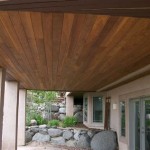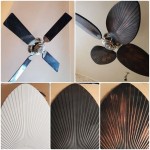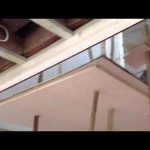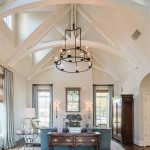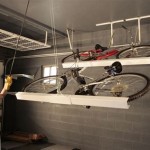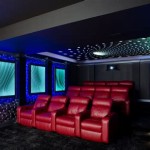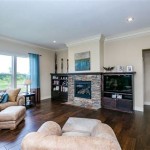What Defines a Cathedral Ceiling in a Home?
Cathedral ceilings, also known as vaulted ceilings, are architectural marvels that bring a sense of grandeur and spaciousness to any room. These impressive ceilings are characterized by their high, sloping sides that meet in a central peak or ridge. Cathedral ceilings have been a popular feature in churches and cathedrals for centuries, and their use in residential homes has become increasingly common in recent years.
The height and slope of a cathedral ceiling can vary significantly, but they typically extend from floor to ceiling and create a dramatic focal point in a room. The sloped sides allow for the installation of large windows, flooding the space with natural light and creating an airy and expansive atmosphere.
Cathedral ceilings are often associated with luxury and elegance, and they can indeed add a touch of sophistication to any home. However, they are not without their drawbacks. One potential issue is the difficulty of installing lighting fixtures and ceiling fans, as well as the increased cost of heating and cooling due to the larger volume of space.
Benefits of Cathedral Ceilings
Despite these potential drawbacks, cathedral ceilings offer a number of benefits that make them a desirable feature in many homes.
- Spaciousness and Airiness: Cathedral ceilings create a sense of spaciousness and grandeur, making even small rooms feel more expansive. The high, sloping sides and abundance of natural light contribute to an airy and inviting atmosphere.
- Architectural Interest: Cathedral ceilings are a striking architectural feature that adds visual interest to any room. They can create a dramatic focal point and draw the eye upwards, making the space feel taller and more impressive.
- Improved Natural Lighting: The sloped sides of cathedral ceilings allow for the installation of large windows, which flood the space with natural light. This can reduce the need for artificial lighting and create a more inviting and cheerful atmosphere.
- Enhanced Acoustics: The high, sloping surfaces of cathedral ceilings help to distribute sound evenly throughout a room, improving the acoustics. This makes them ideal for rooms intended for music or entertainment.
Drawbacks of Cathedral Ceilings
While cathedral ceilings offer many benefits, there are also some potential drawbacks to consider:
- Installation and Maintenance: Cathedral ceilings can be more difficult and expensive to install than traditional flat ceilings. The sloped sides require more materials and labor, and the height can make it challenging to reach fixtures and perform maintenance tasks.
- Heating and Cooling: The large volume of space created by a cathedral ceiling can make it more difficult and expensive to heat and cool the room. This is especially true in homes with high energy costs.
- Lighting and Ceiling Fans: Installing lighting fixtures and ceiling fans on cathedral ceilings can be more challenging than on flat ceilings. The sloped sides may require special fixtures or custom mounting solutions.
Conclusion
Cathedral ceilings are beautiful and dramatic architectural features that can add a touch of grandeur to any home. However, it's important to weigh the benefits and drawbacks carefully before deciding whether a cathedral ceiling is right for your home.

What Is A Vaulted Ceiling Pros And Cons Of Ceilings

Differences Between Vaulted Ceilings And Cathedral

What Is A Vaulted Ceiling Pros And Cons Of Ceilings

Let S Talk About Cathedral Ceilings Lynn Engineering

Eight Benefits Of Vaulted Ceilings In A Home Georgia Remodeling

Cathedral Ceilings Heating Cooling Efficiently Katahdin Cedar Log Homes
:strip_icc()/TheShoreWebRes-17-7f7ae0f061874efb818c52ff9683fc9e.jpeg?strip=all)
16 Stunning Cathedral Ceiling Ideas

Planning A Vaulted Ceiling Everything You Need To Know Checkatrade

Vaulted Ceilings 101 The Pros Cons And Details On Installation Bob Vila

The Ultimate Guide To Vaulted Ceilings Pros Cons And Inspiration
Related Posts

